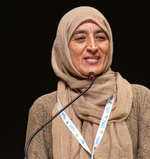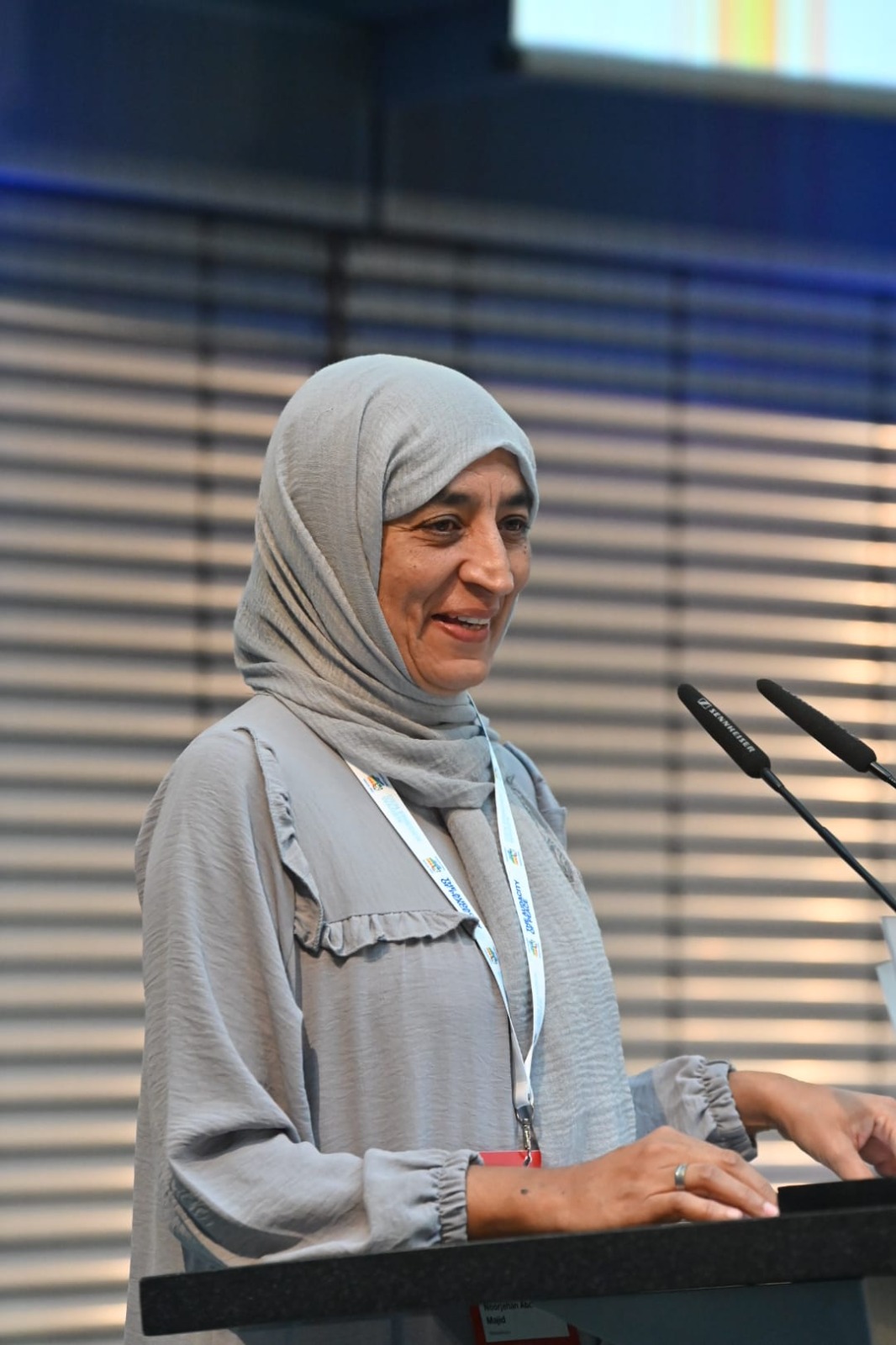
Dear guests,
Becoming an adult in Africa is a daily challenge. Living in areas where healthcare systems are weak, in remote territories, or in regions plagued by wars, afflicted by famine, or at the mercy of climate change results in extremely high infant mortality rates. Half of all child deaths worldwide occur in sub-Saharan Africa. Among the leading killers of young children are malaria, pneumonia, diarrhea, and malnutrition; the latter is responsible for 45% of all child deaths in Africa.
The lack of, or inadequacy of, healthcare services in Africa has been exacerbated by the COVID-19 health emergency. The recent escalation of the conflict between Russia and Ukraine has caused an increase in food prices, further political instability, loss of income for many families, and restrictions on food production and supply.
All of these factors are causing a 23% rise in poverty levels in sub-Saharan Africa. This context primarily affects the weakest and most vulnerable in society, including children. Africa is the continent of children. It is estimated that 40% of the population (especially in sub-Saharan Africa) is under 15 years old.
However, the role of children in families and society is very different from that in Western countries. In a poor family, if there’s little to eat, the adults eat first, and if anything remains, the children eat. Many grow up on the streets, without going to school, and start working at a very young age. Poverty is a common cause of illness. A severely malnourished child, the most lethal form of hunger, has a nine times greater chance of dying than a healthy child. Malnutrition harms children’s health. If left untreated, it endangers their lives and damages their future prospects, making them more vulnerable to health problems and diseases. This means it will be harder for these children to focus or perform well in school, which will have an impact on their adult lives. Much of the tragedy related to child malnutrition is due to the spread of diseases, as well as the lack of access to basic care and vaccinations, food, and water, all of which are widespread issues in the African continent.
I work in the DREAM Program, which stands for Disease Relief through Excellent and Advanced Means, operated by the Community of Sant’Egidio for over 20 years. The program started in Mozambique but is now present in 10 African countries. It provides free prevention and care, initially for patients, but now extended to chronic diseases such as diabetes, hypertension, asthma, epilepsy, female cancer screenings, infectious diseases like tuberculosis, Ebola, and COVID-19, as well as vaccinations. Today, DREAM is a global health program that cares for over half a million Africans. From the beginning, the DREAM Program focused on the care of mothers and children, particularly HIV-positive pregnant women, with the aim of giving birth to healthy babies through treatment of the mother with antiretrovirals.
Twenty-two years ago, the international context was very skeptical that the same antiretroviral therapy provided in the West to HIV-positive pregnant women to prevent transmission to their children during pregnancy and breastfeeding could be applied in Africa. Sant’Egidio believed that the right to health is a universal right for all and engaged in a tough battle to make this possible.
After all these years, I cannot help but express my joy for the hundreds of thousands of healthy children born, many of whom come to visit me as adults today. They have studied, become engineers, doctors, started families. The result of many battles is now in my country and beyond, a generation of young people free from AIDS. Thanks to the tenacity and perseverance of the DREAM Program, no more children with AIDS are born, and the history of the disease has changed, not only in Mozambique but in many African countries. The wall of impossibility that condemned mothers and their children to death has been broken. The other major challenge we had to face was that of children already suffering from AIDS. In Africa, very few children received AIDS treatment in the early 2000s.
Treating HIV-positive children posed additional problems compared to treatment for adults. Accessible pediatric drugs were syrups, three syrups to be taken three times a day. Imagine what it means to administer nine doses a day, adjusted in three formulations based on square meters of body surface or weight in kilograms. The sick children who came to me for visits were orphans in 80% of cases, accompanied by grandmothers, most of whom were illiterate and did not speak Portuguese or older siblings. In any case, they were incapable of managing such a complex therapy. What to do? I gave them a graduated syringe on which to mark the syrup quantities with a marker. Centiliters and milliliters were not in their culture. Some DREAM mothers who had successfully undergone treatment organized a home control group. They went to the children’s homes when there were no family members capable of taking care of them. Every day, they checked the regularity of the administration. It is a kind of home-assisted therapy that has enabled the successful treatment of many HIV-positive children. Home visits allowed us to assess the context, identify other primary needs that could affect the effectiveness of the therapy, and introduce the essential dimension of comprehensive health education for children and families. Children in treatment must be provided with calibrated food, clean water, basic hygiene, and mosquito nets to prevent malaria. From the beginning of DREAM, we adopted a holistic approach to diseases and patients, realizing that providing medicines alone was not enough in situations of extreme poverty. HIV and malnutrition constitute a vicious circle that can lead to death even when taking antiretroviral drugs, so medicines must be accompanied by good nutrition for any child in need. We offer standard foods (oil, flour, sugar, etc.) as well as nutrient-fortified foods to children until their nutritional indices stabilize at standard values. This type of integration helps with treatment and adherence to therapy, resulting in excellent outcomes. Healthy children can then return to studying and living a normal life like other children.
It is very common in Africa for children to die of malnutrition in the first year of life, and the weaning period is always critical. In our care centers, DREAM operators teach weaning that avoids enteritis, infections, poor growth. They show mothers how to cook vegetable broths with fresh vegetables or porridge with local foods like mangoes, bananas, avocados, papayas, readily available in nature or in typical informal trade. Suitable foods for children that are nutritious, easy to prepare, and affordable are recommended. Our struggle is to ensure that life triumphs. Therefore, the right to care must consist not only of providing medicines but of a comprehensive approach that also considers all the other factors that can endanger the lives of our children, such as malnutrition. In some peripheral and particularly poor areas, Sant’Egidio has created specific nutritional centers for thousands of malnourished children, offering proper nutrition and monitoring their nutritional status to prevent diseases that can arise due to malnutrition.
This care model, focusing on the child as a whole, creating a network of support around the child, has proven useful not only for children with AIDS but also for other childhood diseases that DREAM currently treats. In light of changes in the African epidemiological context, since 2015, the DREAM program has begun to expand the services offered not only to people with HIV but to the entire population, including those related to non-communicable and chronic diseases. Among these, those that have a significant impact on health, especially of children, is epilepsy, which is a widespread public health issue in sub-Saharan Africa, with a mortality rate six times higher than in Western countries.
Over 70% of epilepsy patients in Africa do not have access to treatment. There are no specialists to treat this condition in sub-Saharan African countries, but the experience of DREAM, with the scientific support of European scientific institutions, has allowed us to start treating many epileptic children, addressing the issue, especially the stigma that affects epilepsy patients. Epilepsy causes psychomotor delays and, if not well treated, hinders the full development of the child. But every patient for us has a name, a story.
I would like to tell you about my encounter with the first epileptic girl who was brought to a DREAM center on the outskirts of Maputo. Telma, 10 years old, arrived with her mother. The girl had started having epileptic seizures when she was two years old, and the family had locked her in a room where no one could see her, out of shame. The mother had taken her to various traditional healers, who had given her magic potions, but the girl’s condition had only worsened. She had ended up in a coma at the hospital and was now having seizures every 12 minutes. The hospital had referred her to us after her discharge. The girl didn’t speak, clearly had never been to school, was covered in wounds, and was terrified. I started treating her with antiepileptic drugs, and the seizures reduced. The girl began to go out, go to school, write and draw, socialize with others. Today, the seizures are almost gone, and she has found a job as a cleaning lady. The mother, relatives, and neighbors realized that it was an illness, not witchcraft, and spread the word in the neighborhood that it was possible to be treated for this condition. Many mothers now bring their children to us. The same mothers of the children started explaining to others what epilepsy is, how it manifests, that it is treatable, that it is neither infectious nor transmissible. And above all, it is not the result of a supernatural phenomenon, a belief deeply rooted in the continent’s culture, that children are possessed by malevolent spirits.
The stories of the epileptic children I treat are all like Telma’s, considered cursed, “witchcrafted,” sorcerers. In most cases, they are hidden, chained up in places where neighbors cannot see them, sometimes beaten, and in some cases even killed. Yet the disease is curable with drugs. But it is not enough to protect them from abuse and violence.
With the DREAM staff, there is a great deal of work that we do to change the magical mindset that condemns these children, work on information, communication of good news, starting with families and schools, to break the stigma that affects these children and at the same time produce a new culture of health in society, making it more humane. In conclusion, I would like to say that from my years of caring for children in Africa with the DREAM program, defending children’s health, defending life, means first and foremost fighting poverty and the lack of knowledge about hygiene, nutrition, and disease prevention. For this reason, there is a need for a collective effort by governments and international organizations to ensure access to medicines and care for all children, especially the poor, and to ensure that food is not considered a surplus or luxury but a necessary medicine for children’s health.
Thank you for the opportunity to share this panel with you. I am grateful to Sant’Egidio for being part of this battle for life in my country. I have witnessed many miracles of healing, but this was only possible together, in a united WE in this fight that has blessed the lives of so many children and given them a future in our societies.
